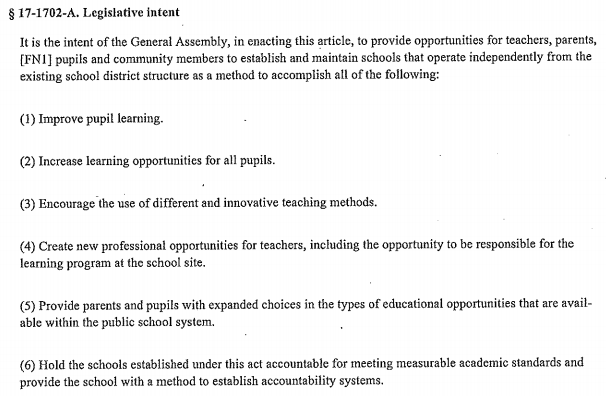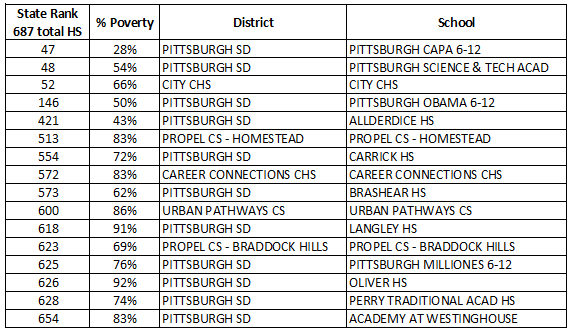 |
| The final scene from the film "The Good, The Bad and the Ugly". |
Last week I was reading the Pittsburgh Teacher Quality Roadmap report that was recently produced by the National Council for Teacher Quality (NCTQ.) The report was contracted by A+ Schools in conjunction with the Urban League of Pittsburgh. On Thursday, May 22 the report went public and A+ Schools hosted an open house where representatives from NCTQ presented the findings. As is typical of any Pittsburgh education discussion, it devolved into an argument of little depth played out in the mainstream media. The argument appears to be between the union, the administration and A+ Schools. Since A+ Schools contracted for the report, some background is in order.
A+ Schools contracted with the National Council on Teacher Quality to provide a Teacher Quality Roadmap for the district. The Roadmap covers five areas: Staffing, Evaluation, Talent Management, Compensation and Professional Culture. A look at the media reporting on the Roadmap typifies how education discussions tumble out of control.
May 21 - Pittsburgh schools await progress report (Pittsburgh Tribune Review)
May 27 - Report on teachers' absences is misleading, Letter to the Editor, (Post-Gazette)
May 28 - Teacher Bashing, Letter to the Editor, Post-Gazette
May 27 - Tough Subject: PPS, union differ on usefulness of teacher-quality report (City Paper)
There is a simple premise that school is based on. The core of the learning experience occurs when the teacher and students are in their classroom working together. The minimum days required in this country (180) is far below that of most other countries in the world. Thus school attendance is even more important due to our limited number of days.
"A+ Schools is the community advocate and leader for educational equity and excellence in Pittsburgh Public Schools. Our core purpose and focus of our work is to remove any barriers to equity in our schools. We are dedicated to educating the public, increasing awareness and engaging the community in efforts to advance change."A+ Schools conducts research pertaining to the public schools of Pittsburgh. The research is posted on their website and falls into the following categories: Great Teaching, School Budgets, Access to Opportunities and Individual Supports, and School Board Governance.
A+ Schools contracted with the National Council on Teacher Quality to provide a Teacher Quality Roadmap for the district. The Roadmap covers five areas: Staffing, Evaluation, Talent Management, Compensation and Professional Culture. A look at the media reporting on the Roadmap typifies how education discussions tumble out of control.
May 21 - Pittsburgh schools await progress report (Pittsburgh Tribune Review)
"A report to be released on Thursday gives Pittsburgh Public Schools high marks for evaluating and compensating teachers but urges the district to shelve a state-required eligibility list for hiring teachers."May 22 - Study recommends changes for the Pittsburgh Public Schools (KDKA-CBS)
"The report recommends changes district wide, but it’s not all bad. It also explains what the district is doing right, such as Pittsburgh’s new teacher evaluation system."
"The National Council on Teacher Quality (NCTQ) released a report stating Pittsburgh has come a long way in terms of measuring effective teachers and compensating educators. But the report also states more needs to be done, including making sure the Pittsburgh Public School District ensures every school has effective teachers."May 22 - Pittsburgh Teacher Absenteeism Called 'Startling" (Post-Gazette)
"While Pittsburgh Public Schools has been pushing to improve student attendance, the National Council on Teacher Quality has taken a look at teacher attendance. In a report released Thursday, the council found that city teachers were out of the classroom an average of 12 days in 2012-13. About a quarter of days counted are ones approved by the district -- not sick or personal days -- including professional development and designing the district's teacher evaluation system. About 11 percent of teachers missed class three or fewer days. The analysis does not count absences of more than 10 consecutive days. The contract provides 12 sick days and two personal days. School superintendent Linda Lane said she found the teacher absentee numbers "pretty startling."
May 27 - Report on teachers' absences is misleading, Letter to the Editor, (Post-Gazette)
"I am writing in response to the article “Pittsburgh Teachers’ Absenteeism Called ‘Startling’ ” (May 23), and I have a confession to make. I am a chronically absent teacher. To date, this school year I’ve missed six days of work for illness, personal responsibilities and a funeral. But I’ve also worked 12 days when I was not in the classroom. These days included a trip to Dallas to study systems that identify students’ college readiness and a field trip to Carnegie Mellon University, where students studied architecture, drew and wrote poetry that was later published. I went with students to Camp Guyasuta and to the Heinz History Center, both wonderful learning experiences for all of us.
However, since the policy advocates who wrote the National Council on Teacher Quality report decided to lump together professional and personal absences, the headline had a good deal of shock value. Make no mistake about it, they could have chosen to separate the absences and not to eviscerate many teachers like me, but that’s not their style. Throughout the country, this group has become legendary for teacher-blaming and perpetuating policy recommendations about teacher evaluation and talent management that have no support in actual research. The report on Pittsburgh schools is no different.
I am chronically absent. And it sure is startling. But what should be more startling is that anyone who cares about public education would give credence to statistics that are clearly used to embarrass those of us who dedicate our lives to teaching Pittsburgh’s students."
May 28 - Teacher Bashing, Letter to the Editor, Post-Gazette
I am writing in response to Eleanor Chute’s article with the headline “Pittsburgh Teacher Absenteeism Called ‘Startling’ ” (May 23). Perhaps a better headline might have been “Dedicated teachers take fewer than allotted sick days.” With teachers constantly in contact with sick children it is “startling” that they do not miss more days.
Every moment in a child’s education is precious. However, I know of teachers forced to leave their classrooms for six days in a row due to PSSA testing. I wrote to Pittsburgh Public Schools superintendent Linda Lane and her Cabinet on March 26 concerning this absenteeism due to testing. It is therefore "startling” to me that Ms. Lane expressed surprise and concern when teachers used fewer than their allotted sick days but that she was not “startled” by missed classroom time related to testing. Perhaps instead of teacher bashing and using misleading headlines, you should focus on how to best support our hard-working educators.
May 27 - Tough Subject: PPS, union differ on usefulness of teacher-quality report (City Paper)
Excerpts from the article.
- "We did not endorse [the NCTQ report]," says PFT President Nina Espositio-Visgitis. "We discouraged members from participating, based on the NCTQ's track record. They continue the over-focus on teacher quality and what we want is a broader effort to strengthen schools."
- On a central office survey of teachers who attempted to transfer voluntarily for the 2013-2014 school year, nearly half of the respondents said they would not move to a hard-to-staff school. At the NCTQ presentation on May 22, Superintendent Linda Lane found this statistic especially troubling. "If you're coming to us saying, 'I don't want to go to your most challenging schools,' then maybe you should go to [another school district]," Lane said. "Those are not the teachers we need."
- Esposito-Visgitis, who declined to attend the report presentation, told City Paper that the district is responsible for these teachers' responses. "If the district would address the teaching and learning environments in these schools, we have shown that not to be the case," Espositio-Visgitis says. "Put a good principal there and people would flock there."
- But Lane says some teachers' aversion to working in high-needs schools comes from the challenges of working with students of diverse races and those living in poverty. "We have to be honest about the fact that there are professionals who don't want to deal with either of those issues [race and poverty]," Lane said.
- "There are a number of policy barriers working against getting the most effective teachers in front of the most vulnerable kids," says Carey Harris, executive director of A+ Schools. Some of these state restrictions include use of the eligibility list, which is a state-required ranking of teacher applicants, in hiring and staffing decisions. According to NCTQ, the list keeps administrators from interviewing candidates who might not be at the top of the list, but would still be a good fit for a high-needs school.
- Other recommendations include having Pittsburgh continue to use its new evaluation system and allowing performance to be a factor in determining which teacher will be laid off. PFT President Esposito-Visgitis sees these recommendations as yet another attack on her members, and another way for the district to place blame on teachers without looking at additional factors that impact student performance. "It's always the same," Esposito-Visgitis says. "It doesn't address poverty; it doesn't address school leadership. It's the same old, same old for years."
The district had an attendance rate of 94 percent in the 2012-2013 school year, but that number masks teachers at both ends of this spectrum. Teachers were out of the classroom an average of 12 days that year, but 11 percent of teachers were out of the classroom three days or fewer. On the other end of the spectrum, after eliminating long-term leaves due to events such as surgery or childbirth, 18 percent of the teacher workforce in Pittsburgh were “chronically absent,” meaning they were absent more than 18 days out of 192.The P-G report ratcheted up the controversy and sold more newspapers. Is teacher attendance a problem? And why should we focus on teacher attendance?
There is a simple premise that school is based on. The core of the learning experience occurs when the teacher and students are in their classroom working together. The minimum days required in this country (180) is far below that of most other countries in the world. Thus school attendance is even more important due to our limited number of days.
| Japan | 243 | New Zealand | 190 | |
| West Germany | 266-240 | Nigeria | 190 | |
| South Korea | 220 | British Columbia | 185 | |
| Israel | 216 | France | 185 | |
| Luxembourg | 216 | Ontario | 185 | |
| Soviet Union | 211 | Ireland | 184 | |
| Netherlands | 200 | New Brunswick | 182 | |
| Scotland | 200 | Quebec | 180 | |
| Thailand | 200 | Spain | 180 | |
| Hong Kong | 195 | Sweden | 180 | |
| England/Wales | 192 | United States | 180 | |
| Hungary | 192 | French Belgium | 175 | |
| Switzerland | 191 | Flemish Belgium | 160 | |
| Finland | 190 |
It is appropriate to look at school attendance for both students and teachers as being key to achievement gains. Obviously, when a student is not in class they are not learning. And when a teacher is not in class the drop off in learning with a substitute teacher is huge. It is also appropriate to look at school disruptions that hinder the educational process. These might include field trips (dare I say Kennywood), teacher leave for professional development, long testing periods, assemblies, etc. Bottom line... good things happen when school is in session and the teacher and students are in the classroom.
So looking at teacher attendance is a reasonable consideration. It is important to note that any discussion of teacher attendance should factor out long term attendance issues caused by extended illness. The Teacher Quality Roadmap report did factor out long term absences.
I would suggest that looking at teacher attendance trends can be a telling sign of morale, teacher buy-in and school culture. After 35 years in public schools in Pittsburgh, I've noticed a large variance in the use of teacher sick/personal days. Teachers in PPS receive 12 sick days and 2 personal days each year. If you don't use these days, they carry over from year to year. Some teachers retire with over 350 sick days not used and others use every single one. Individual teacher attendance concerns are specific to the individual. The causes for being absent can be personal (i.e. illness, family needs, depression) or professionally related (i.e. teacher is struggling, having a hard time coping, has a poor relationship with school leadership). In the best scenario, the school principal works with the individual teacher to address attendance concerns.
Differences in attendance by school can be an indication that there is a problem at the school. It could be a leadership problem, as pointed out by the head of the union in the articles above, or a school morale problem caused by dissension, poor student achievement or constant faculty or leadership turnover. In the best scenario, the district administration works with the principal on school attendance concerns. Whether the attendance problem is at the individual or school level, attendance is one indicator as to whether employees are "in the game".
There is a fundamental problem with the attendance data in the Teacher Quality Roadmap. The report includes absences for illness and personal reasons and adds to that absences for professional reasons (e.g. field trips and professional development.) The reason this is an issue is that the responsibility for absences for personal reasons is the teacher's and the responsibility for the professional absences is the school's. The report put the two together because they looked at teacher absences from the student's perspective - "My teacher is not here today." The answer to the question about absences lies in the details.
The union says the teachers are being picked on and the Superintendent finds the numbers "startling". At any time either of the two parties could put an end to this foolishness by simply publishing the actual data. Out of the 14 personal/sick days, what is the mean and median number that teachers take annually? If the number is exorbitantly high, than the teachers and the union have to answer to the problem. The second question - what is the mean and median number of absences per teacher due to professional considerations? If the number is exorbitantly high than the district needs to answer to that problem. Just a guess, but the fact that neither side will publish this data leads me to believe they both have a problem they are covering up.
It is an interesting dynamic that the study was contracted by A+ Schools and the Urban League. Thus, it took a number of outside nonprofits to publicly address the issue of teacher quality (or attendance in this case.) A+ Schools has addressed the issue of Board quality through its Board Watch Report Cards. They have addressed the issue of individual school quality through its Annual Community Report. They have addressed the issue of school finance through its Budget Reports. They are trying to inform the public as to the key issues that hold Pittsburgh back from becoming a quality school district. They probably are despised by both the union and the Board since they are independent of the district and shining a light on school district issues.
As these arguments unfold in the media, our worldview is always seen as black or white, right or wrong, you're for teachers or against teachers, you're for school leadership or against school leadership, you're for community input or against community input. But of course, we're all for the children.
Everyone knows what's right, yet the district is falling apart - losing students, decreasing achievement, running out of money. The data will show you that there are many teachers who do an excellent job and a much smaller number who do terrible work... and many who fall in between and need support to get better. The same can be said about building principals. And Central Office employees. Pittsburgh is still having the same fight it did when the district had 48,000 students and twice as many teachers. We will fight to the bitter end... and that end is in sight. 72,000 students, 48,000 students, 24,000 students. Next stop 12,000 students. The adversarial relationship between the schools, the union and the community is an old 20th century methodology. Either we work together and produce models that work or the children become orphans. As we continue to fight, our children are losing valuable time.
The Good, the Bad and the Ugly... in no particular order.








